How Pope John Paul II's flag made it back to Fort Simpson over 30 years later
The story of Pope John Paul II's visit to Fort Simpson is well known across the territories.
What's less known is how one of the only physical reminders of the pope's visit finally made its way back, three decades later after it collected dust in an Alberta man's basement.
The pope left behind the papal flag, flown at the airport during his historic visit, for the village. Now, it's on display again at Fort Simpson, thanks to two former coworkers that knew the flag needed to find its way home.
First papal visit falls through
In 1984, Pope John Paul II expressed that he wanted to meet with the Indigenous peoples in Canada during his upcoming cross-country tour.
So, a small group of residents from Fort Simpson said, why not here?
Jim Antoine, chief of the Łı́ı́dlı̨ı̨ Kų́ę́ First Nation at the time, started ramping up support for a papal visit in Fort Simpson. Eventually, every major Indigenous organization in the country backed the idea.
The village of 1,200 people in a southwest corner of the N.W.T., is a central gathering place, Antoine said.
"[The pope] presented himself as someone really down to earth, and in touch with the grassroots people," Antoine said, thinking about why the village wanted to meet with this particular pope.
"It was a good opportunity for Indigenous people in Canada to talk to the head of the Roman Catholic Church ... that's very high-profile."

Antoine and a delegation of the foremost Indigenous leaders in Canada travelled to Rome to hand-deliver the invitation. The pope accepted.
Six months later, the fateful day came. Over three thousand people descended on the banks of the Mackenzie River to catch a glimpse of the pope.
But a thick fog shrouded the village that morning. Despite the prayers of the faithful waiting on the land, the pope's flight was forced to turn back to Yellowknife.
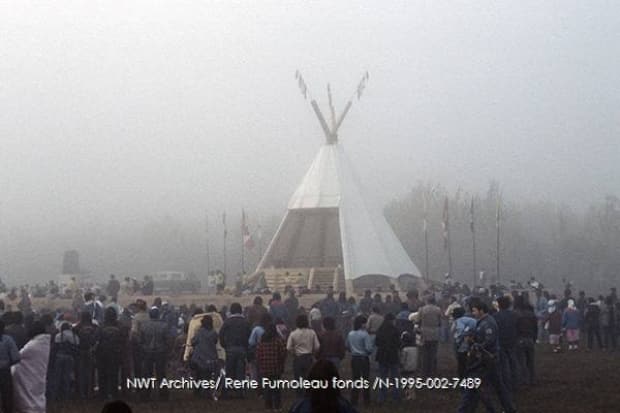
The pope vowed he would make his way back to Fort Simpson one day.
Promise kept
Three years later he did, while on the tail end of his tour to the United States.
"At last, God has brought us together!" The pope's speech started.
He then launched public support for the efforts of Canada's Indigenous peoples to establish self-government, in his speech to the thousands that day.
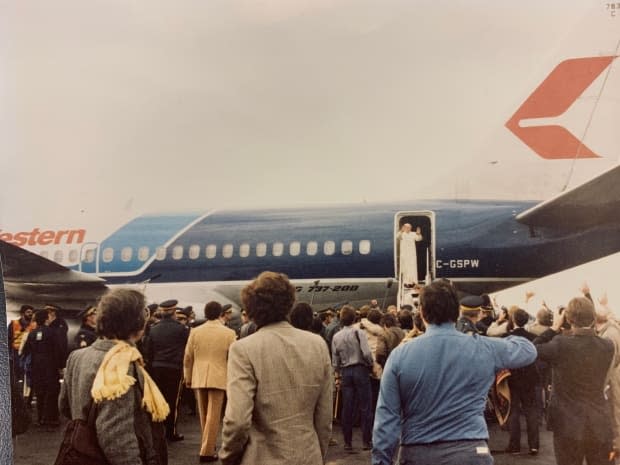
"I affirm the right to a just and equitable measure of self-government, along with a land base and adequate resources necessary for developing a viable economy for present and future generations," a transcript of the pope's 1987 speech reads.
The pope met with a panel of the country's Indigenous leaders after his speech in a teepee, set up for him.
Antoine said the leaders raised all the different hardships that Indigenous peoples endure from colonization, including the residential school system.
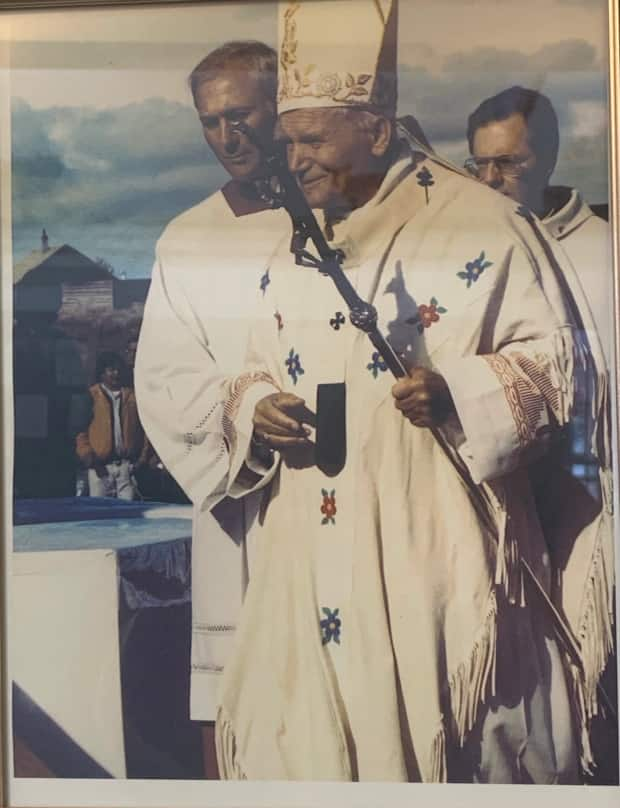
The pope's trip was a significant moment, Antoine said, for Indigenous peoples across the country.
"It brought more awareness to Indigenous people and their struggle here in Canada," he said. "It brought the profile of all our issues more to the forefront."
The flag dilemma
Pope John Paul II took off five hours later, almost as quickly as he came.
He left behind the white and yellow flag of Vatican City that flew at the airport that day.
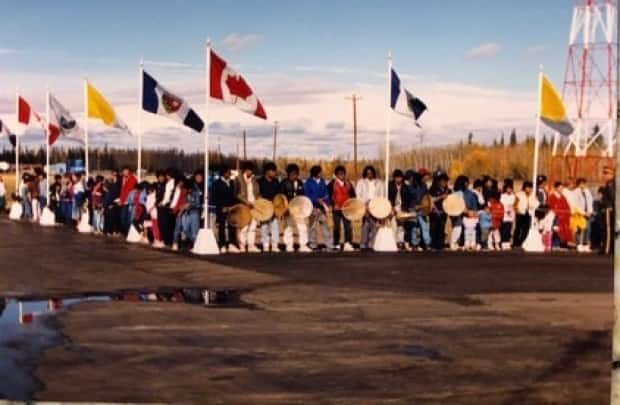
No one knew what to do with the papal flag at first, according to Chuck Tackaberry, one of the staff members at the airport.
All the travellers had left. No one came forward to claim it.
"It never crossed my mind at the time that the flag should be given to the community," Tackaberry, now in his 90s, recalled from that day.
The employees eventually decided to give it to Phil Bowes, the most senior civil servant among them, Tackaberry said, because he was a "good" Catholic and would likely want a keepsake of the pope's visit.
"It's a remembrance of the pope's visit, and the excitement that happened at the time," Bowes said. "I was very pleased to accept it."
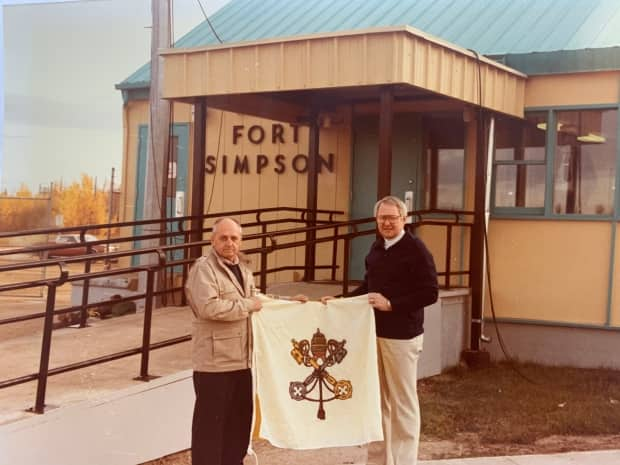
When Bowes returned home to Edmonton, he hung the flag up in his basement among other provincial and territorial ones he gathered over the years.
When the family moved to Canmore in 1989, the flag ended up at the bottom of an old trunk, buried in Christmas decorations.
That's where it stayed for the next thirty years.
'It really connects with a lot of people'
In 2019, Bowes dug through the trunk and unearthed the flag, wrapped in a plastic bag, at the very bottom.
"I thought … maybe there's a place in Fort Simpson for it," Bowes said.
So Bowes started calling his old employees, like Tackaberry, to figure out the best person to send the flag to. Their goal was to find a home for it where its significance would be appreciated.
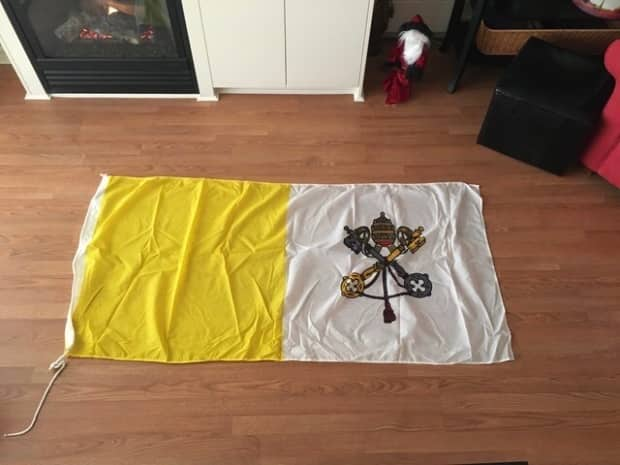
It took three or four months of emails and phone calls, but eventually the men got in touch with Sean Whelly, the mayor of Fort Simpson.
The same night, Whelly asked the village council whether they wanted the flag.
"We said that would be great, we'd love to have it," Whelly said. "The flag, that flew on that day, really connects with a lot of people."
The papal legacy lives on
So Bowes bundled it up, along with three photos taken that day, and sent it by express mail, destination Fort Simpson.
"I'm sorry it took so long … but now, I'm glad it's there," Bowes said.
The Vatican flag now proudly hangs in an exhibit at the village's information centre.
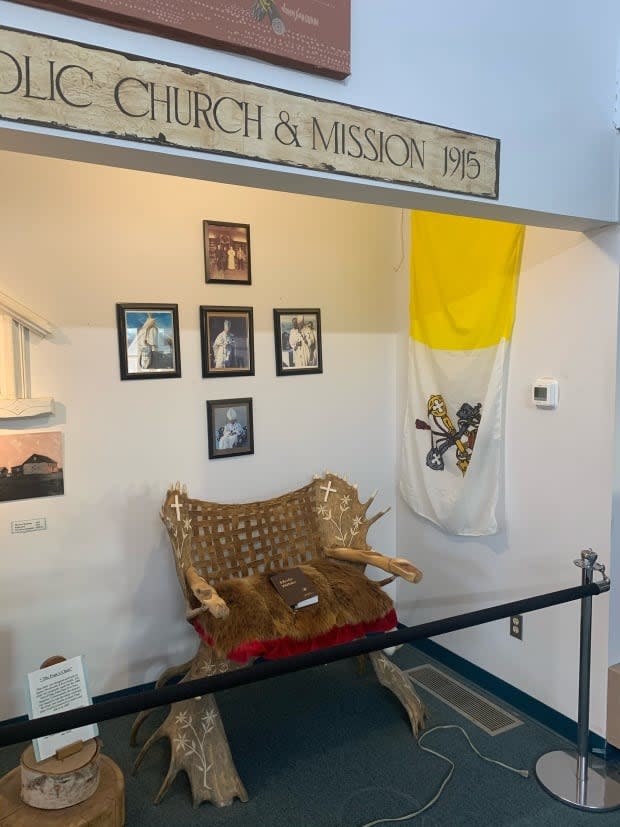
Next to it is the papal chair, carved for Pope John Paul II by the hands of Northern artists. A handful of framed photographs, displayed in the shape of the cross, ties the exhibit together.
There's no doubt from everyone involved, that this is where it belongs.
"When there's big events and things like that, people will often say, 'oh yeah but that's nothing like how it was when the pope came,'" Whelly said.
"We were the most important place in Canada, on that day."

